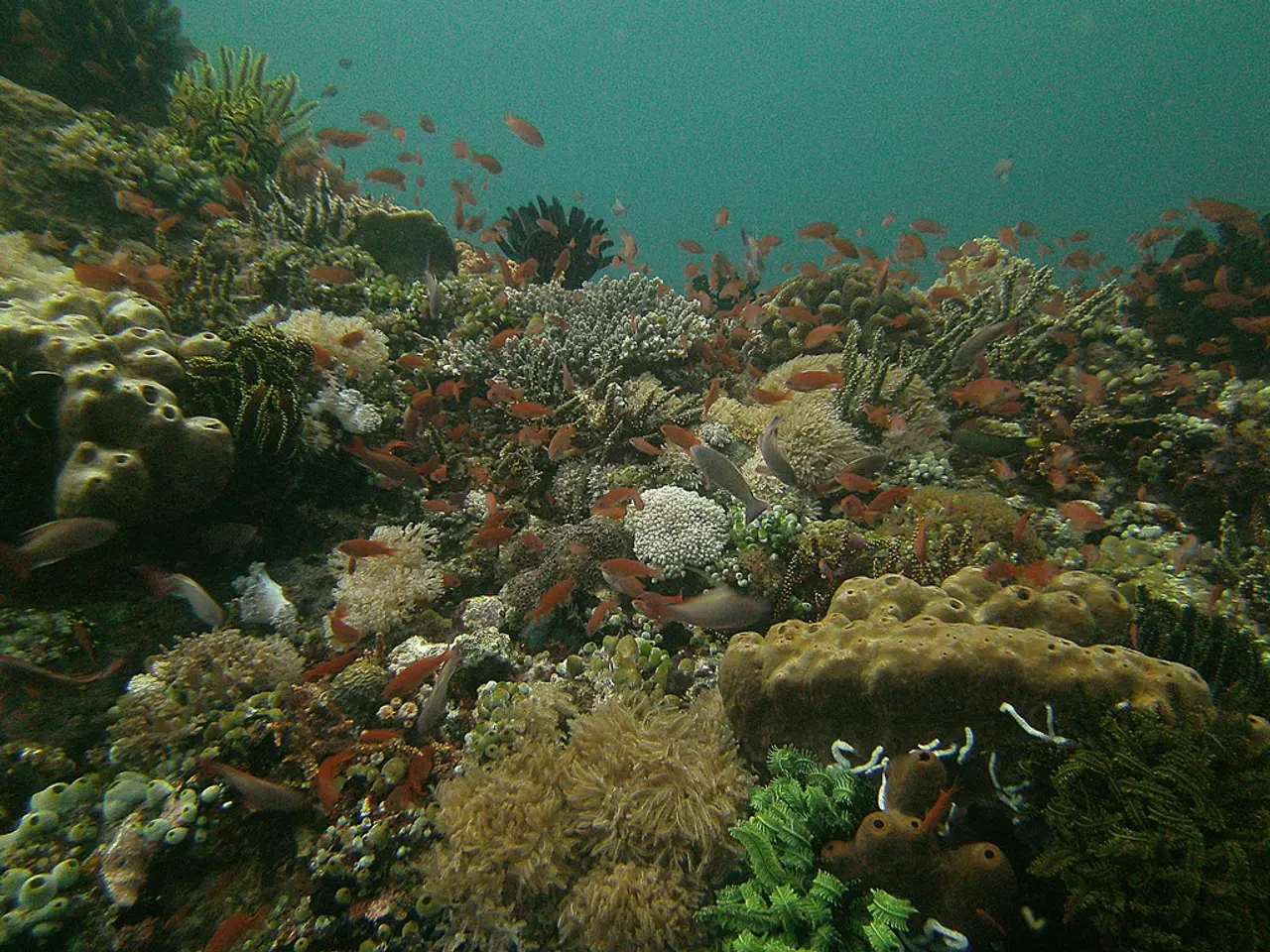Predatory Fish Outwitted by Aerial Drifters: Plankton
In the vast expanse of the ocean, one of the smallest creatures – the copepod – has developed an extraordinary escape mechanism to evade predators and maintain its crucial role in marine food webs.
Certain types of copepods, particularly those from the family Pontellidae, have been observed leaping out of the water and into the air, a behaviour known as aerial acrobatics. This explosive movement, powered by up to 39% of their kinetic energy, propels them above the water surface temporarily, providing a significant survival advantage in their perilous surface-dwelling habitat.
This aerial escape is a rapid predator avoidance strategy, shaped by a trade-off that results in effective and efficient behaviours. By jumping out of the water column, copepods enhance their chances of escaping threats from fast-moving visual predators such as fish. The sudden escape response is difficult for predators to anticipate or counter, making it a powerful survival tool.
The impact on survival is significant. As crucial grazers of phytoplankton, copepods play an important role in nutrient cycling and energy transfer within the ocean ecosystem. By surviving predation better, those copepods maintain their role in these vital processes.
Moreover, this behaviour influences marine ecosystems by supporting stable populations of copepods, which serve as prey for a wide variety of fish species and other marine animals. Changes to their survival rates via escape mechanisms can affect predator populations and overall ecosystem dynamics.
The energetic cost of the escape mechanism is balanced against the risk of predation. Once airborne, copepods encounter much less resistance, allowing them to travel up to 60 times their body length. This not only takes them out of immediate danger but also confuses predators about where they will land.
The study of the air-water interface is often overlooked but is a unique habitat in marine ecosystems. This research emphasizes its importance, highlighting how even the smallest organisms can evolve sophisticated strategies to survive in challenging environments.
In conclusion, the aerial escape mechanism of copepods is a fascinating example of evolutionary adaptation. It not only ensures their survival but also contributes to the stability of marine ecosystems by supporting diverse trophic interactions.
Scientists in health-and-wellness and environmental science sectors are intrigued by the implications of the copepod's extraordinary aerial escape mechanism. The survival advantage gained by this evolutionary trait can potentially contribute significantly to the understanding of nutrient cycling and energy transfer within the broader ocean ecosystem, impacting not only individual species but also entire marine ecosystems.




